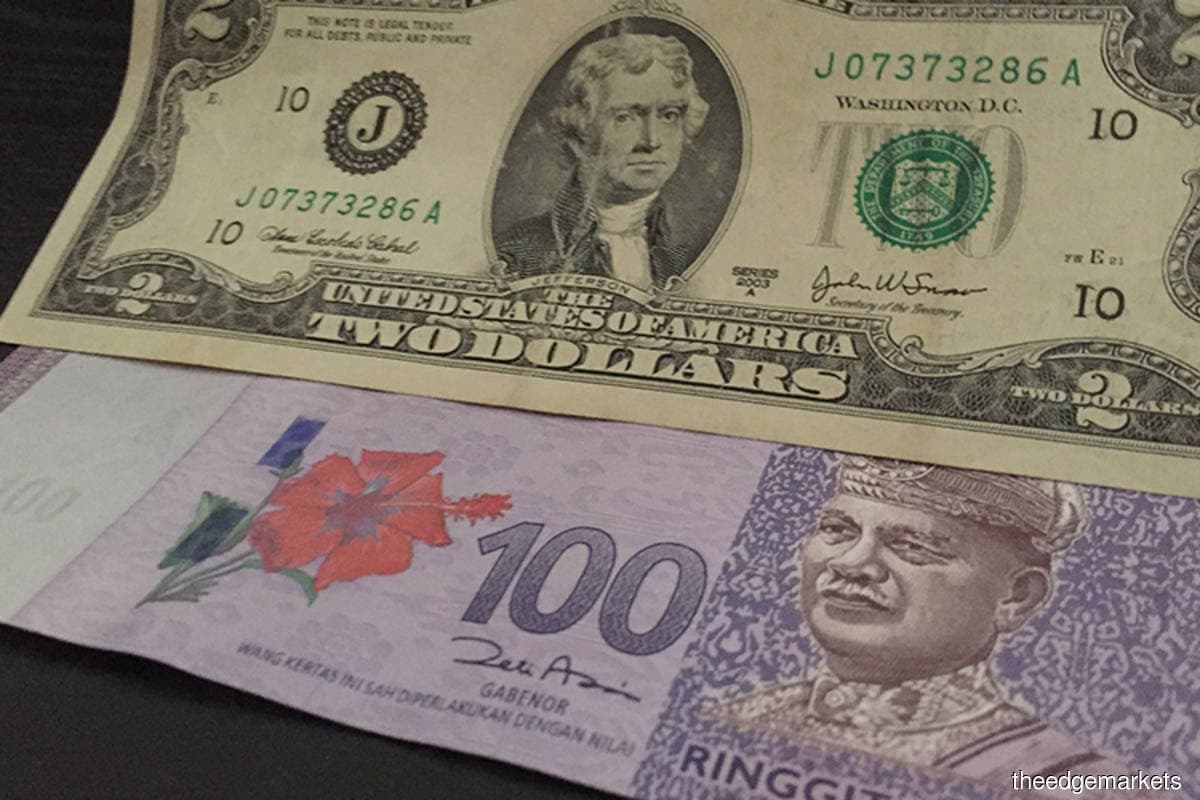
KUALA LUMPUR (March 29): With hindsight of the relatively stable nominal effective exchange rate for the ringgit and the country’s unchanged relative competitiveness in 2022, Bank Negara Malaysia (BNM) believes Malaysia has chosen the right path to remain on the flexible exchange rate regime, instead of heeding some calls to repeg the local currency to the US dollar.
In the newly released BNM’s Annual Report 2022, the central bank said the flexible exchange rate regime had helped the Malaysian economy to adjust to shifting external conditions, without disrupting the country’s economic recovery.
“Despite a major external shock in the form of fast and sizeable adjustments of interest rates in the US, which led to rapid appreciation of the US dollar against most currencies, Malaysia’s competitiveness was relatively unaffected. The domestic economy remained on its recovery path, registering a growth rate of 8.7% for the year,” BNM said.
It said that the flexible exchange rate had contributed to making domestic markets more open and attractive to global investors.
“Malaysia’s exchange rate regime and financial system have evolved over the years to serve the growing needs of an increasingly market-oriented domestic economy,” BNM added.
Last year, there were some calls for the ringgit to be pegged to prevent it from falling further, after the ringgit against the US dollar hovered close to levels last experienced during the Asian Financial Crisis (AFC).
Once again, BNM reiterated that the exchange rate should be determined by Malaysia’s economic fundamentals relative to its key trading partners. It believes the ringgit's depreciation seen in 2022 was a global trend, and not generally indicative of any fundamental weaknesses in the affected economies within the region and globally.
“As the currencies of key trading partners were similarly affected as the ringgit, Malaysia’s relative competitiveness remained unchanged,” the central bank said.
Besides that, BNM said the flexible exchange rate regime provides Malaysia with the flexibility to naturally adjust to international economic and financial shocks.
“For instance, ringgit depreciation can help to cushion the domestic economy from external shocks, such as a sudden decline in global commodity prices,” it said.
BNM said it does recognise that the depreciation in the exchange rate did lead to higher import costs, with the pass-through to domestic inflation being most pronounced for directly imported fresh food items.
However, it said domestic price controls and subsidies on fuel prices, to some extent, had helped to contain the broader impact of an exchange-rate depreciation on inflation.
“Nevertheless, a highly volatile exchange rate can itself be a source of vulnerability for the domestic economy. Large swings in the exchange rate within a very short time can exacerbate uncertainties, and cause individuals and firms to delay their decisions to consume and invest,” BNM said.
“If this is prolonged, it could pose risks to the longer-term domestic economic outlook. To mitigate such risks, BNM undertakes foreign exchange operations to stem excessive volatility and maintain orderly market conditions.”
'Pegged ringgit worked during AFC, but situation is different now'
BNM said the Malaysian economy and financial system ran into deep problems during the AFC, when the balance sheets of banks, firms, and households were severely affected by rapid depreciation of the ringgit and valuation losses in the domestic equity market.
The ringgit was then pegged to the US dollar at 3.8000, alongside the introduction of selective exchange controls, as part of the immediate policy measures. BNM said these measures worked to provide banks and businesses with a stable external environment and space to strengthen their balance sheets.
“However, things are different today. Reforms and policy measures have since been implemented to reduce Malaysia’s external vulnerabilities. Businesses’ and banks’ balance sheets are much more resilient now than they were back then.
“Domestic financial markets are also much more developed and capable of withstanding external financial shocks, without affecting banks’ capacity to support economic activity,” BNM said.
The central bank said introducing and maintaining a peg today in the same way that was done during the AFC would require implementation of capital controls on financial flows.
“Without capital controls, such an exchange rate regime would require the overnight policy rate (OPR) to match the rise in interest rates of the country to which the ringgit is pegged,” it said, which meant that the OPR would need to be raised by 475 basis points (bps) following the cumulative US federal funds rate hikes, compared to the cumulative hike of 100 bps by BNM.
“This will constrain the economy much more due to significantly higher costs of borrowing. In addition, a significantly higher amount of international reserves would be needed to maintain the credibility of the peg as a defence against speculators,” BNM said.
It added that maintaining large foreign exchange reserves can incur higher opportunity costs, as these assets are typically invested in highly liquid but lower-yielding financial assets.
“Selective exchange controls were needed and worked during the AFC, due to the circumstances at the time. The implementation of selective exchange controls during the AFC was targeted at stabilising short-term capital flows and has since been liberalised.
“More importantly, the controls allowed us to implement the necessary reforms to strengthen the banking system and the corporate sector. Heeding calls to repeg every time the ringgit depreciates could mean switching capital controls on and off. This would create a highly unstable and unpredictable environment for investors and businesses,” BNM said.
If pegged unnecessarily, BNM said it would hinder investments, innovation as well as the growth potential of the domestic economy, and come at the expense of future economic productivity, and lead to significant welfare losses.
Don't miss the other highlights of the BNM Annual Report 2022. Read the articles here.


